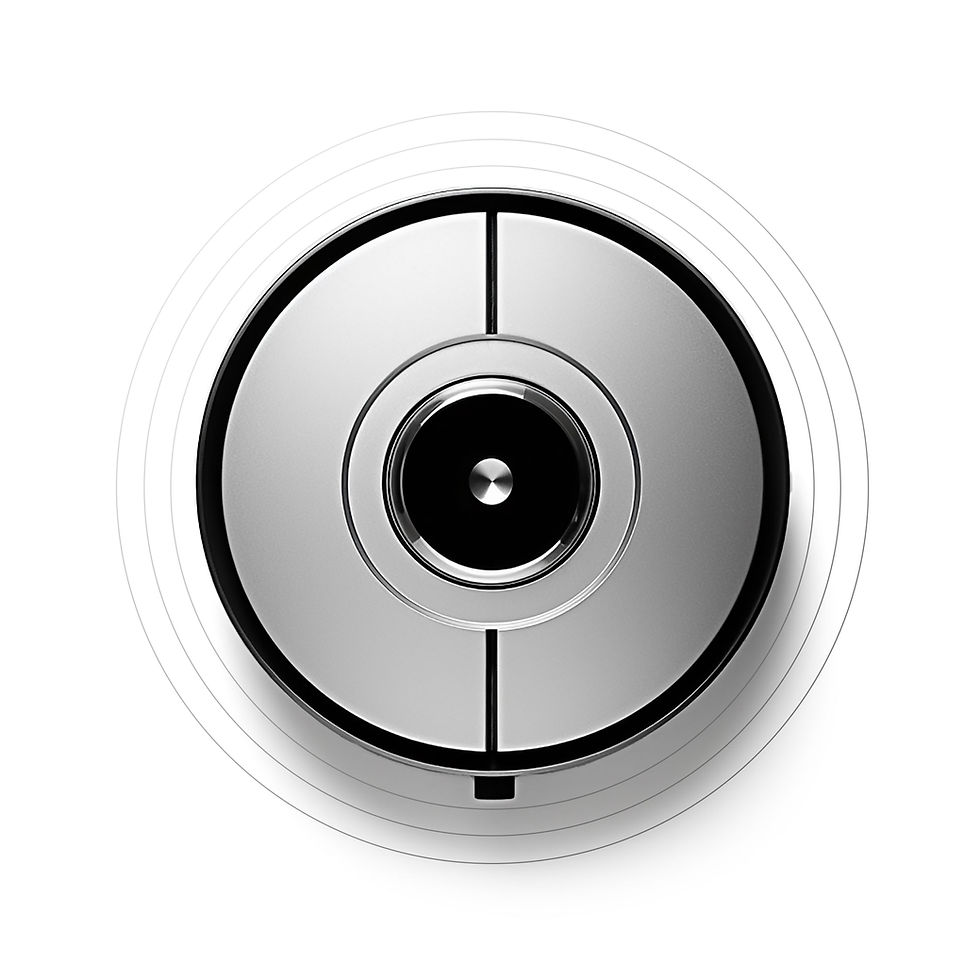Sustainability is a critical concern for large organisations, particularly in light of stringent EU directives on greenhouse gas emissions. Ireland aims to reduce emissions by 51% by 2030, yet the Environmental Protection Agency (EPA) recently highlighted that current efforts are insufficient, projecting only a 29% reduction. For facilities and energy management teams, this underscores the urgency of adopting innovative solutions to bridge this gap.
Considering that HVAC (heating, ventilation and air conditioning) systems in commercial buildings typically account for about 40-50% of the total energy consumption this is a key target for optimisation.
A promising new innovation in this arena is the integration of HVAC control systems with IoT occupancy sensors. This blog explores how integrating these sensors with HVAC/Building Management Systems (BMS) can transform energy efficiency and contribute to sustainability goals.

The Challenge with Conventional HVAC Management
Traditional HVAC systems often operate on fixed schedules, running at full capacity regardless of actual occupancy. This approach leads to significant energy waste, as spaces are heated, cooled, and ventilated even when unoccupied.
Some feedback mechanisms using Internal Air Quality (IAQ) sensors are being used with limited success, since CO2 levels are lagging indicators for occupancy. These inefficiencies not only drive up operational costs but also contribute to unnecessary carbon emissions.
Why Traditional HVAC Controls Fall Short
Floor Area Limitations: Traditional HVAC control methods based on floor area offer a static measure that doesn't account for variable occupancy levels throughout the day. This often leads to over-ventilation of sparsely occupied spaces or under-ventilation of densely occupied ones, resulting in inefficiency and discomfort.
IAQ Drawbacks: While internal air quality indicators, such as CO2 levels, can signal the need for ventilation, they are lagging indicators. IAQ measures react to changes in air quality after they have occurred, leading to a reactive approach in HVAC control. This can cause delayed adjustments, temporary discomfort, and inefficient energy use.

The Power of IoT Occupancy Sensors
IoT occupancy sensors provide real-time data on space usage, allowing HVAC systems to adjust dynamically based on actual demand. Unlike conventional methods that rely on static measures like floor area or reactive measures like internal air quality (IAQ), occupancy sensors offer a proactive solution. They enable precise control of HVAC systems, ensuring energy is used only when and where it's needed.
Sustainability Benefits of Smart HVAC Control
Energy Efficiency - IoT occupancy sensors adjust HVAC operations based on actual occupancy, drastically reducing unnecessary energy use. This leads to significant cost savings and a smaller carbon footprint.
Environmental Impact - By optimising air quality and ventilation on demand, IoT sensors contribute to substantial reductions in carbon emissions, helping companies meet stringent EU energy directives.
Cost Savings - Reduced energy consumption translates into lower operational costs, providing financial benefits alongside environmental gains.
Adaptability and Scalability - These systems can be effortlessly implemented in diverse environments, enhancing comfort and safety without compromising privacy.
Research and Development: Innovative Impact
At REDZone, we are developing TRUCount AirSync, an innovative technology that integrates smart IoT occupancy sensors with a range of industry-standard HVAC control systems. Studies have shown that such systems can reduce carbon emissions and energy consumption by at least 20%.
This innovative approach not only aligns with EU directives but also reduces the environmental footprint of companies and translates into substantial cost savings.
Aligning with Ireland's Climate Goals
According to the EPA, Ireland is struggling to meet its legally binding emissions reduction targets for 2030. Despite adopting an updated Climate Action Plan, the country is projected to achieve only a 29% reduction in greenhouse gas emissions by 2030, far short of the 51% target. The EPA underscores the urgent need for accelerated implementation of measures to achieve these goals.
As organisations strive to meet sustainability goals, the integration of IoT occupancy sensors with BMS represents the future of HVAC management. This approach ensures that HVAC systems respond in real-time to the actual needs of building occupants, leading to optimal energy use and enhanced comfort.

Conclusion
Smart HVAC control using IoT occupancy sensors is a game-changer for sustainable facilities management. By moving away from conventional timer-based systems to real-time reactive control, organisations can significantly reduce their energy consumption and carbon emissions. Embracing these technologies is not just about compliance with regulations; it's about leading the way towards a more sustainable future.
Contact us to learn how our IoT solutions can transform your HVAC management and help you achieve your environmental goals.
Contact Information:
Email: info@redzone.ie
Phone: +353 1 963 0963
REDZone are at the forefront of workplace management using smart IoT technology in Ireland, committed to driving innovation and sustainability in office environments.

Comments